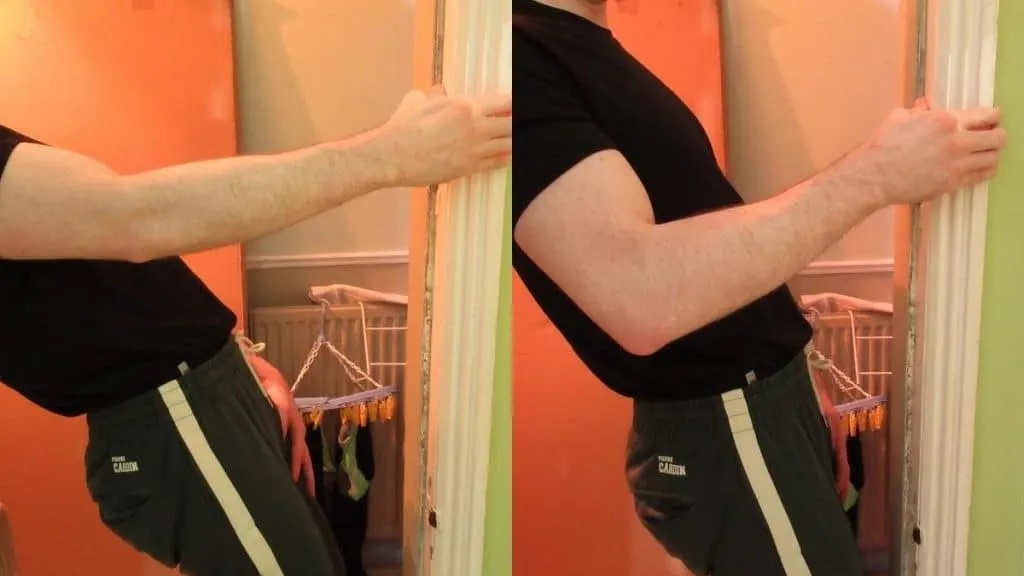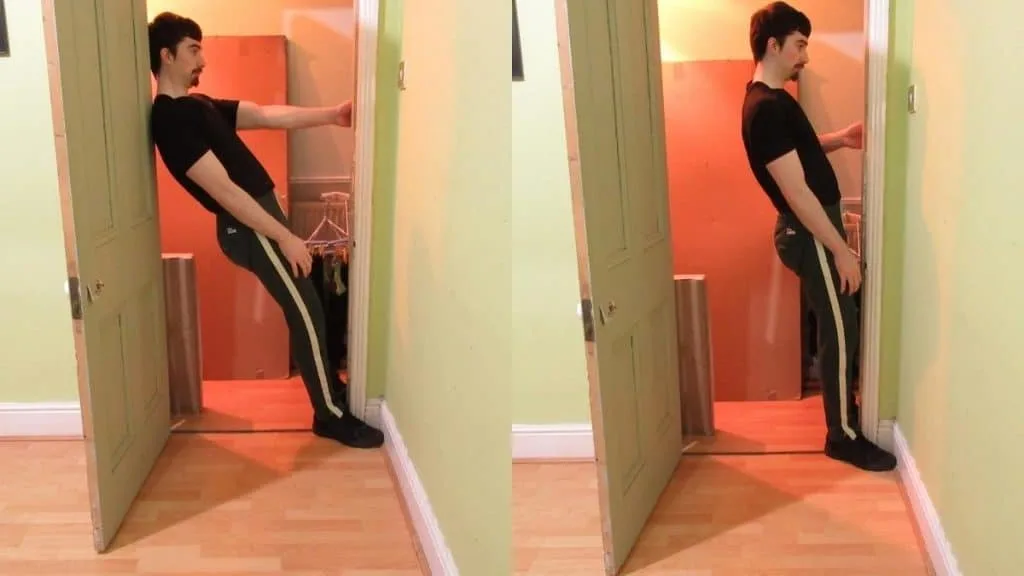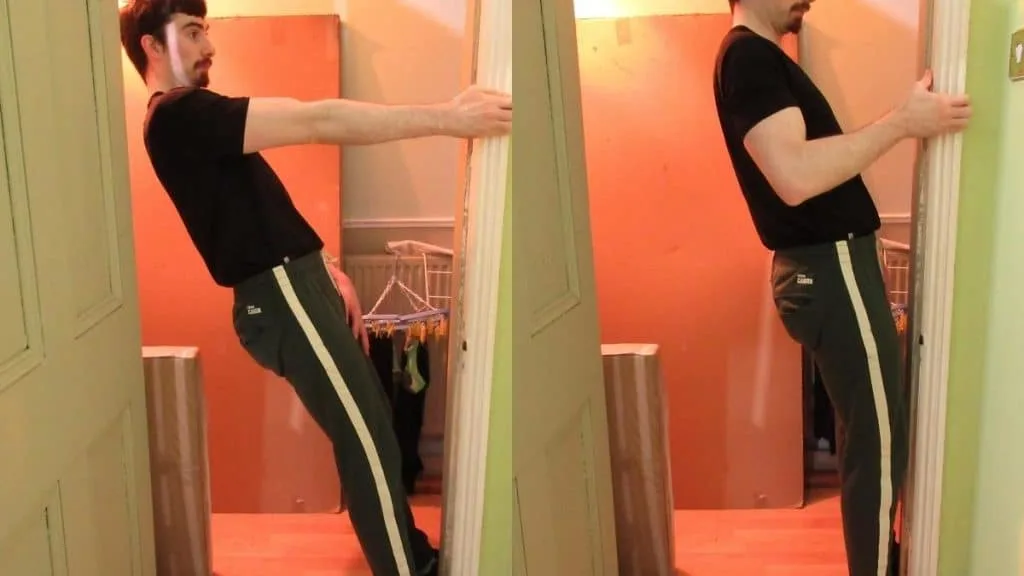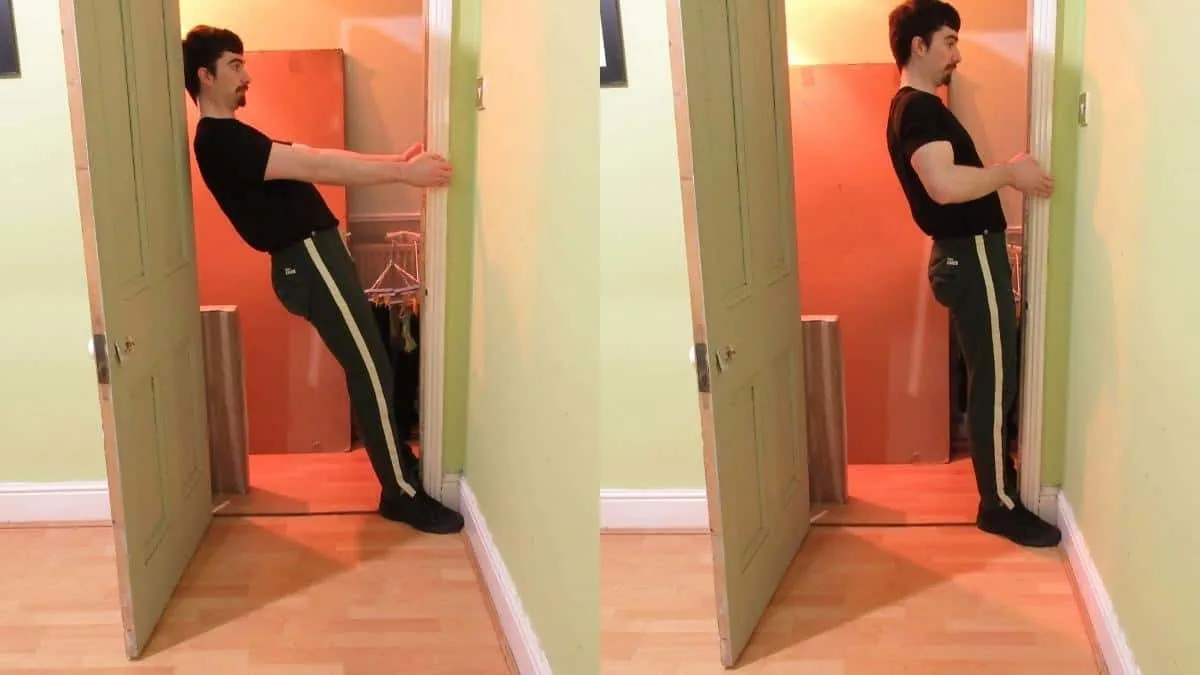Door curls mainly work the bicep muscle, the brachialis, and the brachioradialis. Unlike the traditional curl, doorway curls also place a lot of emphasis on your gripping muscles seeing as you have to hold onto the doorframe with your hands. As such, they’re arguably the best exercise for working the biceps at home.
This guide shows you how to do doorway bicep curls correctly and then explains how to maximize the effectiveness of the exercise.
Related: Medicine ball curls
Door curls exercise details
- Main Muscles: Biceps brachii
- Secondary Muscles: Brachialis, brachioradialis, forearm flexors, forearm extensors
- Exercise Type: Strength
- Exercise Mechanics: Isolation
- Difficulty Level: Beginner
- Equipment Needed: None
How to do doorway curls
- Stand in the middle of a doorway facing the casting.
- Shuffle your feet to one side of the doorframe, grab the frame with both hands, and then lean your body back to create some resistance.
- Pull your torso toward the doorframe and squeeze your biceps. Don’t allow your elbows to travel behind your body (you don’t want to turn it into a row).
- Hold the contraction for a moment and then lower yourself slowly until your elbows reach full extension.
- Repeat for 3-5 sets of 10-20 reps.
How to get the most from door curls
Performing bicep curls with your door will definitely preserve your biceps if you can’t get to the gym. However, by following these simple training tips, you can actually get a tremendous muscle-building workout from doing curls with your door.
Perform high reps

Muscles need plenty of tension to grow, so doing a few reps per set, especially when you’re doing bicep exercises without weights, isn’t going to cut it.
As such, you need to do high rep doorway curls in order to enjoy the best effects. Shoot for at least 10 reps per set but don’t be afraid to perform 20-30 reps if you can manage it.
Slowing down the eccentric portion of your reps will also help to put your biceps under more tension while simultaneously encouraging you to use good form.
Train unilaterally

You can instantly make door bicep curls harder by training each arm separately. This will double the resistance for your biceps and give your core a tougher workout as well. After all, something has to keep your body balanced while your biceps are curling!
Additionally, you can hold the doorframe with a pinch grip (i.e., between your fingers and thumbs) rather than wrapping your palm around it. This technique will significantly increase your forearm activation and help you to develop a firm grip, something which towel curls definitely won’t help with.
The only minor downside to training each arm separately is that your sets will take twice as long to get through. However, since you’re most likely training at home, you don’t need to commute to the gym or wait around for machines, meaning that the additional time commitment shouldn’t be much of a burden.
You can also do an isometric bicep hold on your doorframe at the end of your workout to burn out the remaining muscle fibers.
Add external resistance
If you’re at the stage where you can already do high-rep one arm door curls (for multiple sets), then you can increase the difficulty by wearing a weighted vest. This will take the exercise from muscle maintenance territory into the realm of muscle building while also allowing you to do fewer reps per set.
See Also: Exercise ball biceps curl
In conclusion

Doorway curls are a convenient exercise for strengthening your biceps if you can’t get to a gym and don’t have access to free weights. On the other hand, door curls also make a great addition to existing workouts because they provide a surprising amount of resistance when you make the modifications that we recommended above.
The trick is to lean your torso back enough to create sufficient resistance, but not so far back that it reduces your range of motion.
You can also do supersets for the biceps by paring door curls with another movement to further increase the time under tension and get an even better workout.


